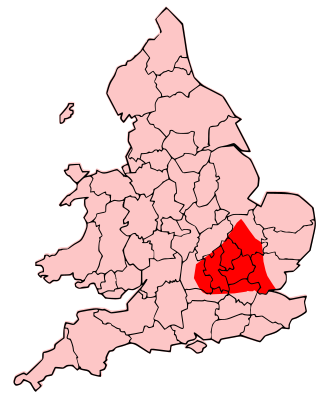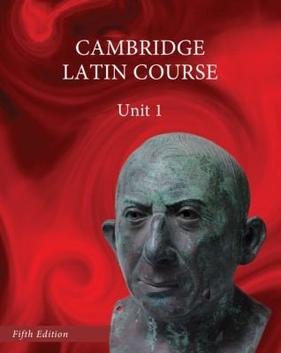The Atrebates were a Belgic tribe of the Iron Age and the Roman period, originally dwelling in the Artois region.

The Cantiaci or Cantii were an Iron Age Celtic people living in Britain before the Roman conquest, and gave their name to a civitas of Roman Britain. They lived in the area now called Kent, in south-eastern England. Their capital was Durovernum Cantiacorum, now Canterbury.

The Catuvellauni were a Celtic tribe or state of southeastern Britain before the Roman conquest, attested by inscriptions into the 4th century.

The Regni, Regini, or Regnenses were a Tribe which occupied modern West Sussex, East Sussex, south-west Kent, eastern Surrey, and the eastern edges of Hampshire. Their Tribal centre was at Noviomagus Reginorum, close to Trisantona Fluvius which joined the English Channel at Littlehampton, a little way to the east of Noviomagus Reginorum. The tribe was bordered to the west by the Belgae, to the north by the Atrebates, and to the east by the Cantiaci, while much of their northern border was filled by the vast and near-impenetrable Weald Forest. Nevertheless, they were thinly scattered on either side of the Weald, and there were safe paths through the forest.
Togodumnus was king of the British Catuvellauni tribe, whose capital was at St. Albans, at the time of the Roman conquest. He can probably be identified with the legendary British king Guiderius. He is usually thought to have led the fight against the Romans alongside his brother, but to have been killed early in the campaign. However, some authorities now argue that he sided with the Romans and is one and the same person as the client-king Tiberius Claudius Cogidubnus, whose original name may have been Togidubnus or Togodumnus.

Tasciovanus was a historical king of the Catuvellauni tribe before the Roman conquest of Britain.

Succession to the British throne is determined by descent, sex, legitimacy, and religion. Under common law, the Crown is inherited by a sovereign's children or by a childless sovereign's nearest collateral line. The Bill of Rights 1689 and the Act of Settlement 1701 restrict succession to the throne to the legitimate Protestant descendants of Sophia of Hanover who are in "communion with the Church of England". Spouses of Catholics were disqualified from 1689 until the law was amended in 2015. Protestant descendants of those excluded for being Roman Catholics are eligible.
Adminius, Amminius or Amminus was a son of Cunobelinus, ruler of the Catuvellauni, a tribe of Iron Age Britain. His name can be interpreted as Brittonic *Ad-minios, "he who is very tender".
Eppillus was the name of a Roman client king of the Atrebates tribe of the British Iron Age. He appears to have ruled part of the territory that had previously been held by Commius, the Gaulish former ally of Julius Caesar who fled to Britain following the uprising of Vercingetorix, or possibly of his son. Eppillus is not mentioned in any historical sources. Coins bearing his name also bear the inscription COMMI.FILI which is generally read as Commios filius indicating at least a claim to be Commius's son.
Dubnovellaunus or Dumnovellaunus was the name of at least one, and possibly several kings of south-eastern Britain in the late 1st century BC/early 1st century AD, known from coin legends and from a mention in the Res Gestae Divi Augusti.
Lugotorix was a British chieftain who was captured after a failed attack by the four kings of Kent on Julius Caesar's naval camp in 54 BC. His name may mean "mouse-king".
The Ancalites were a tribe of Iron Age Britain in the first century BCE. They are known only from a brief mention in the writings of Julius Caesar. They may have been one of the four tribes of Kent, represented in Caesar by references to the "four kings of that region" and in the archaeological record by distinct pottery assemblages.
The names of the Celtic Iron Age tribes in Britain were recorded by Roman and Greek historians and geographers, especially Ptolemy. Information from the distribution of Celtic coins has also shed light on the extents of the territories of the various groups that occupied the island.

The Cambridge Latin Course (CLC) is a series of textbooks published by Cambridge University Press, used to teach Latin to secondary school pupils. It provides a grounding in vocabulary, grammar and sense which allows progression through Common Entrance exams into a Secondary, or, Public School. First published in 1970, the series is in its fifth edition as of April 2019. It has reached high status in the United Kingdom, being the most-used Latin course in the country for secondary school pupils, and being used by 85% of Latin-teaching schools.
The Segontiaci were a tribe of Iron Age Britain in the first century BCE. They are known only from a brief mention in the writings of Julius Caesar. They may have been one of the four tribes of Kent, represented in Caesar by references to the "four kings of that region" and in the archaeological record by distinct pottery assemblages.
Cingetorix was one of the four kings of Kent during Caesar's second expedition to Britain in 54 BC, alongside Segovax, Carvilius and Taximagulus. The four were allies of the British leader Cassivellaunus, and attacked the Roman naval camp in an attempt to relieve him when he was besieged by Caesar in his stronghold north of the Thames. However the attack failed and Cassivellaunus was forced to seek terms.
The Cenimagni were a tribe of Iron Age Britain in the first century BCE. They are known only from a brief mention in the writings of Julius Caesar. It has been suggested that the name is a variant of Iceni with the Latin adjective magni, meaning "great". Others have suggested that they may have been one of the four tribes of Kent, represented in Caesar by references to the "four kings of that region" and in the archaeological record by distinct pottery assemblages.
The Bibroci were a tribe of Iron Age Britain in the first century BCE. They are known only from a brief mention in the writings of Julius Caesar. They may have been one of the four tribes of Kent, represented in Caesar by references to the "four kings of that region" and in the archaeological record by distinct pottery assemblages.
The Cassi were a tribe of Iron Age Britain in the first century BCE. They are known only from a brief mention in the writings of Julius Caesar. They may have been one of the four tribes of Kent, represented in Caesar by references to the "four kings of that region" and in the archaeological record by distinct pottery assemblages.

Durovernum Cantiacorum was a town and hillfort in Roman Britain at the site of present-day Canterbury in Kent. It occupied a strategic location on Watling Street at the best local crossing of the Stour, which prompted a convergence of roads connected to the ports of Dubris (Dover), Rutupiae (Richborough), Regulbium (Reculver) and Portus Lemanis (Lympne). Considerable archaeological evidence of Roman activity has been found in Canterbury, much of which can now be found in the Roman Museum built on the remains of a Roman townhouse.